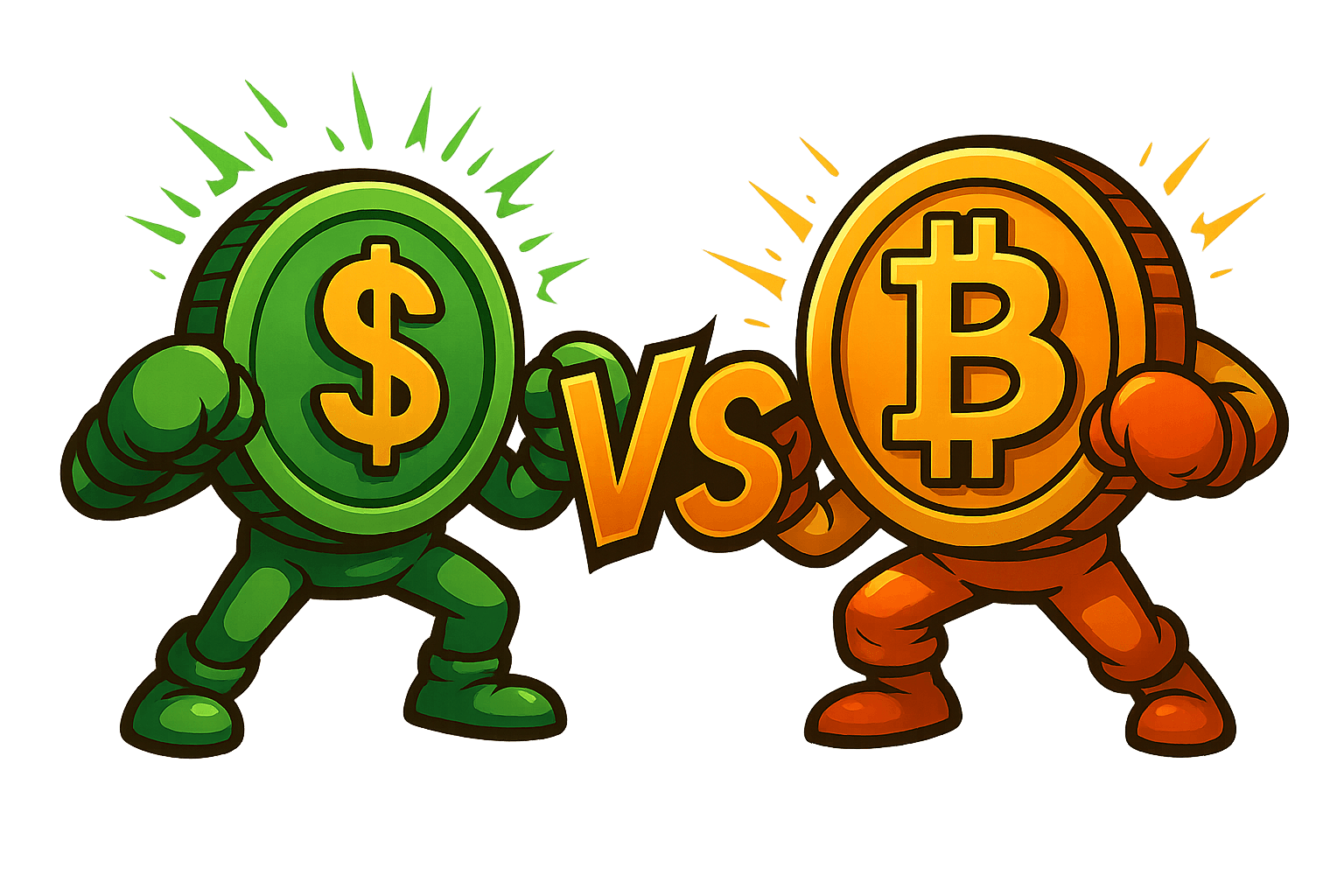
Fiat vs BTC – Real-Time Monetary Issuance Clock
This interactive clock compares the creation speed of fiat money (like M2 in USD, MXN, COP, EUR) against the predictable issuance of Bitcoin (₿) and Gold (XAU), highlighting the differences between inflationary and deflationary systems.
USD
United States DollarBTC
Bitcoin📊 What is M2 and How Does It Compare to BTC & Gold?
Fiat currencies are created digitally by central and commercial banks. The speed shown is based on the growth of the M2 money supply. This issuance is often linked to national debt and economic policies, making it flexible but potentially inflationary.
Why are Bitcoin & Gold Different?
Bitcoin is "mined" via proof-of-work. Its issuance is predictable, halves every four years, and has a hard cap of 21 million coins. Gold is physically mined from the earth. Its new supply is difficult to increase and depends on mining discoveries and technology. Both have scarcity, making them deflationary by design, unlike fiat currencies which have no supply limit.
Frequently Asked Questions
M2 is a broad measure of money that includes physical cash, checking and savings deposits, money market securities, and other time deposits. It represents the "near money" that is liquid and accessible in an economy.
Bitcoin has a fixed, predictable issuance schedule that decreases over time until it stops completely at 21 million BTC. Fiat currencies have no supply limit and can be created at any rate determined by central banks, often leading to inflation.
Its supply is strictly limited to 21 million coins. As demand increases for a finite asset, its purchasing power tends to rise over time. This is the opposite of inflationary currencies, which lose purchasing power as their supply increases.
Governments often finance their debt by issuing bonds. Central banks may purchase these bonds, a process that injects new money into the banking system and increases the overall money supply (M2). Therefore, rising public debt can be a significant driver of monetary inflation.
⚠️ Monetary Velocity Estimation
The amounts shown are estimates and are for illustrative purposes only to visualize the approximate speed of new money supply creation.
The data is based on historical rates and projections but may not be accurate in real-time. This is an educational space to understand the differences between monetary systems.